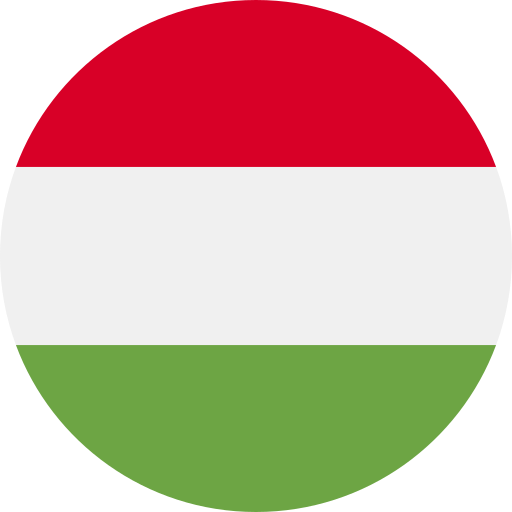Key Takeaways
- Hungarian Language Overview: Hungarian, or Magyar, is a Uralic language primarily spoken in Hungary by about 9.7 million people, distinguished by its unique grammar and vocabulary.
- Global Presence: Significant Hungarian-speaking communities exist outside Hungary, particularly in Romania (1.2 million), Slovakia (500,000), Serbia (300,000), and Ukraine (150,000).
- Cultural Significance: The Hungarian language embodies rich cultural heritage and history for its speakers worldwide, serving as a vital connection to their identity and traditions.
- Challenges Faced: Hungarian speakers often encounter challenges such as language barriers, cultural integration issues, limited access to educational resources in Hungarian, and underrepresentation in global media.
- Community Connections: Despite geographical isolation and dialect differences, efforts are made within communities to maintain linguistic ties through festivals and local gatherings that celebrate their culture.
Did you know that Hungarian isn’t just spoken in Hungary? It’s a fascinating language with roots that stretch far beyond its borders. If you’re curious about where else in the world you can hear this unique tongue, you’re in for an exciting journey.
Overview of Hungarian Language
Hungarian, known as Magyar, is a unique language with deep roots in the Uralic language family. It’s primarily spoken in Hungary, where around 9.7 million people use it as their first language. What sets Hungarian apart is its distinct grammatical structure and vocabulary that differs significantly from most European languages.
Beyond Hungary’s borders, Hungarian holds importance in several neighboring countries. In Romania, approximately 1.2 million people speak Hungarian, mainly in regions like Transylvania. Slovakia is home to an estimated 500,000 speakers, particularly among the ethnic Hungarian community concentrated near the border.
You might find notable communities of Hungarian speakers in Ukraine and Serbia as well. About 150,000 people speak it in Ukraine’s Zakarpattia region and roughly 300,000 individuals use it in northern Serbia’s Vojvodina province.
Interestingly enough, smaller populations exist across various global cities due to migration patterns over decades. Cities like Chicago and Toronto host vibrant communities where you can hear Hungarian spoken daily.
The global presence of the Hungarian language showcases not just its cultural significance but also its adaptability as speakers maintain their linguistic heritage while integrating into new environments. This rich tapestry connects various nations through shared history and culture.
If you’re interested in exploring more about how languages connect us or need voiceover talent fluent in diverse languages including Hungarian for your projects, you’ll find a wealth of resources available to help bridge those gaps effectively.
Countries Where Hungarian Is Spoken
Hungarian, or Magyar, is not just a language of Hungary; it resonates in several other countries too. Let’s explore where this unique language finds its speakers around the globe.
Hungary
Hungary stands as the heart of the Hungarian language, with about 9.7 million native speakers. This vibrant nation boasts a rich cultural heritage that influences its linguistic landscape. The distinctive grammar and vocabulary make Hungarian one of Europe’s most intriguing languages, drawing interest from linguists and enthusiasts alike.
Romania
In Romania, approximately 1.2 million people speak Hungarian, primarily in Transylvania. This region hosts a significant Hungarian minority that preserves its cultural identity through festivals, education, and community events. You’ll find a lively atmosphere here where tradition meets modernity, creating an environment where the language thrives.
Slovakia
Slovakia is home to around 500,000 Hungarian speakers who contribute to the country’s multicultural tapestry. Many reside in southern regions near the border with Hungary. Their presence enhances local culture and provides opportunities for collaboration across artistic fields—imagine potential voiceover talent offering services in both Slovak and Hungarian!
Serbia
Serbia has roughly 300,000 native speakers of Hungarian mainly found in Vojvodina. This area showcases a fascinating blend of cultures and languages thanks to its diverse population. The communities here actively celebrate their heritage through music and art while maintaining strong ties to their linguistic roots.
Ukraine
In Ukraine, around 150,000 people speak Hungarian within specific communities primarily located in western regions like Zakarpattia. These groups preserve their traditions despite geographical challenges. Engaging with these communities can offer insights into how culture shapes language use—even leading to opportunities for voice actors interested in regional dialects!
Cultural Significance of Hungarian Language
Hungarian, or Magyar, holds a unique place in the cultural identities of its speakers around the globe. This language isn’t just about communication; it embodies a rich tapestry of history and tradition that connects diverse communities.
Historical Context
Hungarians trace their roots back to the Uralic tribes in Central Asia, bringing with them distinct linguistic traits. The establishment of the Kingdom of Hungary in 1000 AD marked a significant moment for the Hungarian language, which began to flourish alongside national identity. Throughout centuries of foreign influence and territorial changes, such as during Ottoman rule or Austro-Hungarian governance, Hungarian speakers preserved their language as a symbol of resilience. This historical backdrop fosters pride among communities today.
Contemporary Use
In modern times, you’ll find vibrant Hungarian-speaking populations not only in Hungary but also across neighboring countries like Romania and Slovakia. Whether at local festivals celebrating traditional music or community gatherings showcasing cuisine—these interactions highlight how integral language is to cultural expression. In cities like Chicago and Toronto, you can witness this spirit alive through events that connect generations through storytelling and art forms.
Maintaining these connections isn’t just important for those within these communities; it’s essential for anyone seeking voiceover talent fluent in Hungarian. Understanding the nuances of this culturally rich language adds depth to voiceovers aimed at engaging audiences authentically. When you work with voice artists who grasp this significance, you ensure your project resonates on multiple levels—bringing an authentic touch that transcends mere words.
Challenges Faced by Hungarian Speakers Globally
Hungarian speakers face various challenges in different regions around the world. Language barriers often hinder effective communication, especially when interacting with non-Hungarian speakers. This can lead to misunderstandings in personal and professional settings.
Cultural integration presents another significant challenge. Many Hungarian communities strive to maintain their traditions while adapting to new cultures. Balancing these aspects can create tension within families or communities, as younger generations may gravitate towards local customs rather than preserving their linguistic heritage.
Accessing resources in Hungarian proves difficult outside Hungary. Limited availability of educational materials, media, and literature hampers the ability of speakers to develop proficiency or engage with contemporary content in their native language. This scarcity affects not just individuals but also voice artists seeking opportunities to showcase their talents effectively.
In terms of representation in global media, Hungarian is underrepresented. With few platforms offering content in Hungarian, audiences miss out on diverse perspectives that could enrich understanding across cultures. Voice over talent may find it challenging to secure roles that highlight their unique skills due to this lack of visibility.
Geographical isolation also impacts community interactions. For instance, Hungarian-speaking populations spread across countries like Romania and Slovakia often have difficulty connecting with one another due to distance and differing dialects. These factors contribute to a fragmented experience for those passionate about maintaining cultural ties.
Lastly, economic constraints can limit opportunities for many Hungarian speakers globally. Pursuing careers that require fluency can be tough if local markets don’t support or recognize the value of multilingual capabilities—especially for voice actors looking for roles that leverage their unique linguistic skills.
Navigating these challenges requires resilience among Hungarian speakers worldwide as they work toward fostering connections and promoting the richness of their language through various means including art forms like music and storytelling.
Conclusion
Hungarian’s global presence showcases its rich history and cultural significance. As you explore the various communities worldwide, you’ll notice the pride and resilience among speakers who cherish their language. From festivals in Romania to vibrant neighborhoods in Chicago, these connections highlight how language fosters community and identity.
Despite challenges like limited resources and integration issues, Hungarian speakers continue to celebrate their heritage through music, art, and local events. Engaging with these communities not only enriches your understanding of Hungarian culture but also opens doors for authentic communication. Embracing this unique language allows you to appreciate the diverse tapestry that connects us all across borders.
Frequently Asked Questions
What is the Hungarian language?
Hungarian, or Magyar, is a unique Uralic language spoken by about 9.7 million people primarily in Hungary and surrounding countries. Its distinct grammar and vocabulary set it apart from most European languages.
Where is Hungarian spoken outside of Hungary?
Besides Hungary, significant Hungarian-speaking communities exist in Romania (about 1.2 million), Slovakia (approximately 500,000), Ukraine (150,000), and Serbia (300,000). These regions maintain their cultural heritage through festivals and community events.
Why is the Hungarian language important culturally?
Hungarian serves as a symbol of history and tradition for its speakers. It connects diverse communities and fosters pride among them, showcasing their rich cultural expressions through music, art, and local gatherings.
What challenges do Hungarian speakers face globally?
Hungarian speakers encounter various challenges such as limited access to resources outside Hungary, language barriers affecting communication and integration, underrepresentation in global media, and economic constraints limiting career opportunities.
How can understanding Hungarian benefit voiceover projects?
Understanding Hungarian adds depth to voiceover work by capturing the nuances of this culturally rich language. It ensures that projects resonate authentically with audiences familiar with the culture and traditions associated with the language.







